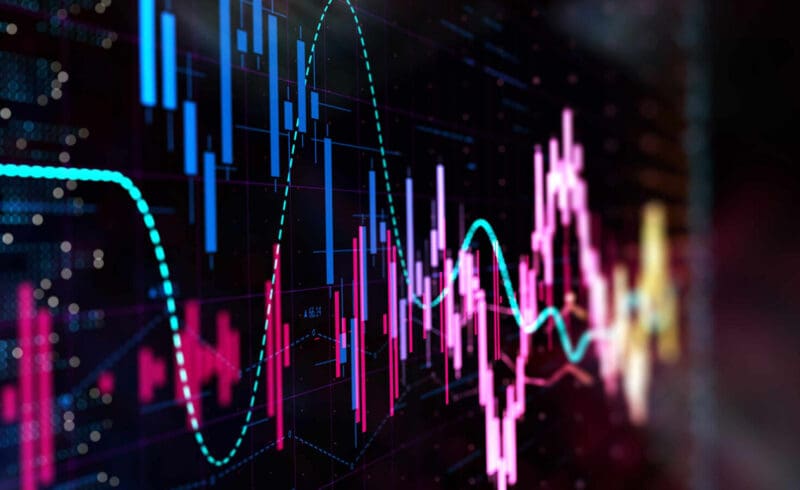Over the last year or so, we have seen a marked increase in automated and commodity algorithmic trading searches and reports.
Trading businesses are keen to understand the viability, set-up and staffing requirements for commodity algorithmic trading portfolios, as they become more aware that many competitors have either already built or are currently building capabilities to stay competitive. But what exactly do we mean by automated and algorithmic trading, where do commodities fit in this journey, and what specific hiring trends have we already seen?
The number of trading houses seeking to bring automated or algorithmic trading teams within the commodities markets is growing. From the traditional majors, through to the utilities and the merchants, everyone is exploring the best way to stay competitive in the market. You’ll hear it called a myriad of things from algorithmic trading, automated trading, digital trading, and systematic trading to business-specific names such as ‘A1 Trading’.
And while each of these names aims to encapsulate the way a trading firm is using digitalisation to stay competitive in the trading markets, they can often mean very different things.
Automated versus Commodity Algorithmic Trading
When many commodities players start talking about algorithmic trading, they often mean, at this stage, automated trading. That is, automating various parts of the trading process to ensure quick, efficient and competitive trades. Trading tools can analyse data and produce trading signals that an experienced individual can interpret and use to trade. This automation doesn’t get rid of the need for analysts, but for the more repetitive cycles, they can alleviate simple transactions so traders can focus on more complex trading strategies on desk.
As the systems improve, they can take on an increasing amount of information and are therefore able to identify trends more rapidly. Artificial intelligence and machine learning also take data from previous trades and situations, predict future outcomes, and provide better intelligence to the trading teams.
It is also worth noting where the PnL sits. With these automated trades, the PnL often sits with the individual trading desks, and the value at risk is normally monitored as part of their book. The team responsible for building the platform normally works as part of technology. In many automated trading teams, the technologists do not report to the desk and, through building close relationships with them, maintain a more ‘service-oriented’ approach.
When a firm is ready to embrace algorithmic trading, the need for a more integrated team arises. Algorithmic trading moves past real-time optimisation of trading models and allows for the data and the tools to begin making decisions. Algorithmic trading teams, of course, still monitor these trading strategies and trading decisions, as portfolio managers and traders are often on hand to execute the trades. However, the need to integrate technology and commercial traders is demonstrated by the shift from technology being a service centre to being a business value add. These platforms, models, and trading strategies have the ability to make large sums of profit for the business. Technologists sit beside quants and traders to build bespoke platforms, helping them build trading models, and working alongside them.
In many of these instances, including Gazprom’s Digital Trading Team, a major German trading business’s algorithmic trading venture, and BP’s A1 trading team, these desks have their own PnL and budget.
Automated and algorithmic trading is a scale; in most cases, automated trading desks and the structures around them are built as a precursor to an aspiration to have an algorithmic trading desk. In some cases, the appetite for a full algorithmic trading desk isn’t there; automated is the goal. There’s no way to show which way is better; it will depend on the business, budget, asset classes, and risk appetite.
Where To with Commodity Algorithmic Trading?
At what point will we trust the computer and the algorithm to do an energy and commodity trader’s job? When will we never cross the computer? In other asset classes, including equities and FX, platforms like this already exist. Companies like Jane Street have spent decades building their models and platforms to give them an edge, with some strategies running autonomously.
But commodities trading firms tend to be slightly behind the curve, having been a little behind in the adoption of data within their trading strategies. They cannot rely on Bloomberg and Reuters as primary data source, and various datasets need to be corralled to make informed decisions. The data element needs much more investment in physical commodities trading; things like supply and demand don’t just rely on investor sentiment or the launch of a new product. It depends on weather data, crop health, storage and shipping capacity, supply chain integration, asset optimisation, and more.
Many firms are already well into their data journey, some at the point where they’ve established best-in-class data warehouses, data cleansing and ETL pipelines. These are the firms that will be able to set up automated or algorithmic trading teams and do well from it.
The question will be how they move forward with this: what are their strategic aims? Where does the business wish for the team to sit? What is their aim? Who will hold the PnL? How will the technologists be viewed in this team?
Hiring Trends in Commodity Algorithmic Trading
- Significant scale-ups of data teams: this is not just data scientists, but also data engineers, ETL engineers, DevOps engineers, platform developers, and more.
- Python, Python, Python: individuals with strong Python skills are in high demand. This doesn’t just mean the basic ability to build a model, but in-depth knowledge of Pandas, NumPy, SciPy, SciKit-Learn for machine learning, etc. In most instances, technologists cannot be Python-only developers, they need an object-oriented processing language to back them up – .NET Core and C++ are still popular, with some Java in the mix.
- Technologists are more likely to be hired into these new teams, as they have a specific mandate of building out platforms with a specific intent to automate or trade systematically. Traders are variably reassigned from within the business or hired externally, depending on the pain points of the business.
- Technology first? Normally, when hiring a developer, the first conversation they have is about their technical suitability. This isn’t always the case for algorithmic and automated trading teams. The individual’s ability to understand the business domain, or a demonstrated ability to pick it up quickly, as well as their ability to talk to traders and quant analysts, will make them much more suitable to a role in algorithmic/auto trading than the extra 2% on a technical test.
In a trading landscape where a minute can make all the difference, and volatility is abundant, everyone is looking for an edge. Many believe that hedge funds have had it right—automating trading decisions saves time and makes money—and are looking to replicate this success. No matter which way a firm approaches it—whether they automate or start allowing the machines to ‘make ‘decisions’— the ‘rise of automated, algorithmic, and systematic trading isn’t going anywhere.
–
For a conversation with a member of our global Commodities team, please get in touch.




